Call Us
+86 136 6007 9809
Call Us
+86 136 6007 9809
Apr. 18, 2023
There are many kinds of automotive fasteners, including bolts, studs, screws, washers, retaining rings, pins, rivets, welding studs, assemblies and connection pairs, etc. With the popularization of new energy vehicles, the scope and quantity of their application continue to expand, and the amount of fasteners is also increasing.
1. Application of lightweight materials
More and more lightweight materials, such as magnesium-aluminum alloy, are used to design and manufacture new energy vehicles. The potential difference between steel and magnesium-aluminum alloy will lead to severe electrolytic corrosion. A significant difference in the coefficient of thermal expansion can also lead to extreme preload changes, resulting in substantial joint relaxation, and the use of high-tensile strength aluminum alloy fasteners can overcome these problems. Considering the lightweight nature of automobiles, currently, automobiles use many high-strength steel plates, and some designs also use aluminum alloy plates to reduce the vehicle's weight further.
Metal sheet connections account for a large proportion of automobile production and assembly, such as welding the automobile body in white, connecting body parts, installing interior parts, etc. The use of fasteners to attach metal sheets is an essential part of automobile production in addition to welding. The primary connection method of the aluminum alloy plate is mainly to consider its light weight and replace the steel plate in the non-important load-bearing parts of the car. The welding characteristics of aluminum alloy are inferior, so fasteners are often used for connection. For example, the connection between the door hinge and the metal sheet of the car body is generally made of double screws and welded nuts to ensure that the door effectively protects the occupants when the vehicle collides or rolls over, and the connection part is not easily deformed in an accident so that the occupants can escape smoothly. When selecting the connection process, avoiding the potential corrosion caused by the superposition connection of different metal sheets is necessary.
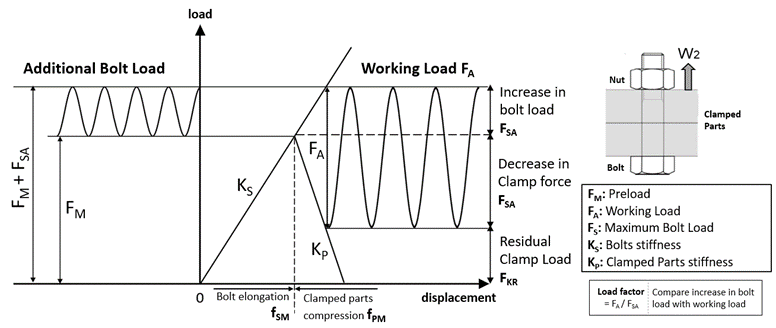
1) Ordinary threaded connection
① For the connection without nuts, the thickness of the parts connected by the metal sheet is relatively large, or only blind holes can be made, then bolts or screws can be directly screwed in and tightened.
② Welding bolts or welding studs can also be used for connection with ordinary nuts. First, the bolts or studs are welded on the metal sheet; then, the connected parts are installed and fixed with ordinary nuts.
2) When using ordinary threaded connections, the anti-loosening of the threads should be considered. Generally, two methods can be used: pre-tightening force control and pre-applied locking glue.
① self-tapping screw connection;
② Riveting, riveting fasteners, PBSO (PTSO) self-riveting nuts; PS (PSS) series self-embedded nuts; PFH (PFHS) series self-riveting screws; ARB-HEX series self-riveting nuts; TOX connection;
③ Buckle, etc.
2. Application of high-strength bolts and heat-resistant bolts
Ultra-high-strength fasteners can reduce their weight and, more importantly, provide more significant potential and safety protection for the lightweight design of other vital components.
New energy vehicles usually use 10B33, SCr440 (40Cr), SCM435 (35CrMo), and SCM440 (42CrMo) steel to produce 8.8, 9.8, 10.9 high-strength bolts, and the highest strength level of ultra-high-strength bolts is 1400Mpa (14.9).
Under the trend of lightweight automobiles, the powertrain system has continuously increased requirements for power density and strict emission requirements. High power density brings higher pressures, higher temperatures, and increased loads, while stringent emissions standards call for reduced weight and internal friction. The new energy vehicle has a weight requirement, and weight reduction is significant for battery mileage. Using ultra-high-strength bolts can reduce the weight of the bolt itself, and smaller bolt holes can be used accordingly so that the weight of the connected parts will also be significantly reduced. Using ultra-high-strength bolts can reduce the weight of new energy vehicles. The significance potential is still huge.
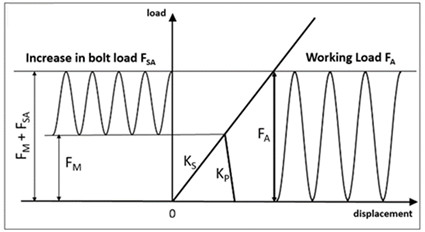 | 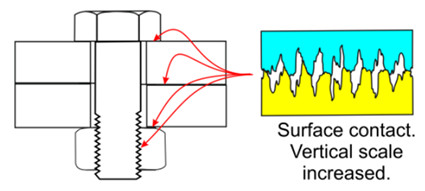 |
Ultra-high-strength bolts are mainly used on new energy vehicle engines, gearboxes, and axles. In the critical areas of the engine, a. connecting rod; b. cylinder head connection; c. primary bearing connection; d. flywheel and other parts. Ultra-high-strength bolts are used on the chassis of new energy vehicles, bearing connection bolts are used, the number of bolts can be reduced from 4 to 3, and the specification is reduced from M12 to M10. For battery packs and motors, especially for battery packs, the module bolt connection can be reduced from M8 to M6, and the battery pack body connection M10 can be decreased to M8.In the connection design of new energy vehicle bolts/studs, the designer must not only fully consider the size, material, tolerance level, mechanical properties, etc., of the bolts but also fully consider the application environment of the bolts, such as temperature field (high/low temperature), vibration, etc., alternating hot and cold, corrosive and other environmental factors.
Non-quenched and tempered steel has outstanding advantages such as excellent performance, high efficiency, energy saving, and low use cost. It is conducive to environmental protection and energy saving. The non-quenched and tempered steel used to manufacture fasteners is cold-work strengthened. According to the organization, there are ferrite+ Pearlite, ferrite + bainite, and ferrite + martensite duplex structures. The national standard has three grades: MFT8, MFT9, and MFT10. SCN430 and SCN435 energy-saving non-quenched and tempered cold heading steels do not require heat treatment and have been used in products with a strength level of 8.8. The 8.8-grade M6×840, M8X675, and M6×930 long studs for fixing new energy vehicle battery packs are made of non-quenched and tempered steel MLF20MnVNb without quenching and tempering. The length of the studs made of wire rods after drawing, cold heading, and rolling is 830-920 mm, the performance of the studs meets the requirements of grade 8.8, and the fatigue limit σ-1 of 5 million times is 86-101 (average 86.40) MPa, which meets the requirements of the automobile factory (≥80 MPa). Factory certification. It can meet the requirement of less than 0.5mm/m straightness requirement, and the application of non-quenched and tempered steel in high-strength fasteners still has the problem of die wear. Due to the unique environment of the engine exhaust system and the sealing problem between the connecting parts, design has always been complicated for various automobile manufacturers' research and development processes.
For the localization requirements of automotive heat-resistant steel fasteners, T/CSAE99-2019 "Technical Conditions for Heat-resistant Steel for Automotive Fasteners" and T/CSAE136-2020 "Technical Conditions for Automotive High-temperature Connection Fasteners" and GB/T3098 .24-2020 "Stainless Steel and Nickel Alloy Bolts, Screws, Studs and Nuts for High-Temperature Mechanical Properties of Fasteners" and GB/T3098.25-2020 "Guidelines for the Selection of Stainless Steel and Nickel Alloy Fasteners with Mechanical Properties of Fasteners." The main content includes relevant technical requirements for heat-resistant materials for fasteners, technical requirements for wire rods and wires, technical conditions for manufacturing high-temperature-resistant fasteners and technical conditions for surface treatment, and technical conditions for system assembly verification, including mechanical properties and torque tests. Identification marks, packaging, delivery requirements, etc., apply to engine fasteners, including hexagonal bolts, studs, nuts, etc.
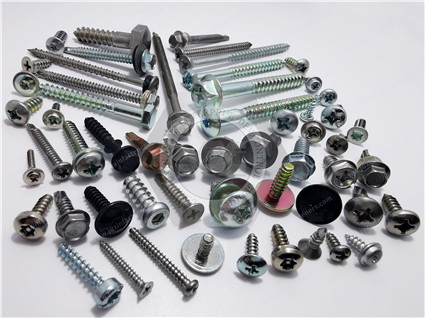 | 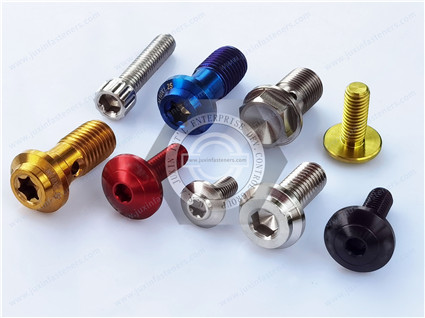 |
Heat-resistant steel or nickel alloy fasteners, material grades are ML06Cr15Ni25Ti2MoAlVB (GH2132), ML04Cr11Nb, ML41CrMoV, ML21CrMoV, 14Cr17Ni2 (1Cr17Ni2), NiCr20TiAl (GH4080A), Inconel718 (GH4169), etc. For heat-resistant fasteners, although there are many heat-resistant materials containing nickel and chromium, correct heat treatment technology must be used to better play the function of heat-resistant steel. For this reason, the heat treatment process is an important guarantee for improving the quality and reliability of heat-resistant steel fasteners. High-strength fasteners can provide higher clamping force, reduce the size of fasteners, and reduce their weight to meet lightweight requirements. At the same time, high-strength fasteners are also conducive to the compactness of other structures of new energy vehicles, thereby improving heat dissipation and internal friction. Heat-resistant fasteners are used to solve the problem of connection failure in high-temperature environments. The increase in the temperature of the engine exhaust environment will cause changes in the product's mechanical properties, such as a decrease in tensile strength and hardness, resulting in creep or changes in the metallographic structure, leading to connection failure. The development of future fasteners for new energy vehicles lies in the continuous integration and progress of technologies such as artificial intelligence, machine learning, big data, and the Internet of Things.
These technologies can control quality and improve failure prevention measures from fastener design, forming, heat treatment, surface treatment, assembly, installation, etc., and reduce risks and failure rates, improving fasteners' manufacturing and application levels. Even the reliability of automobiles is of great significance.
Contact Us
Tel.:
+86 020 8621 0320
+86 020 3121 6067
E-mail:
Technical Support:
Navigation
SEND INQUIREY